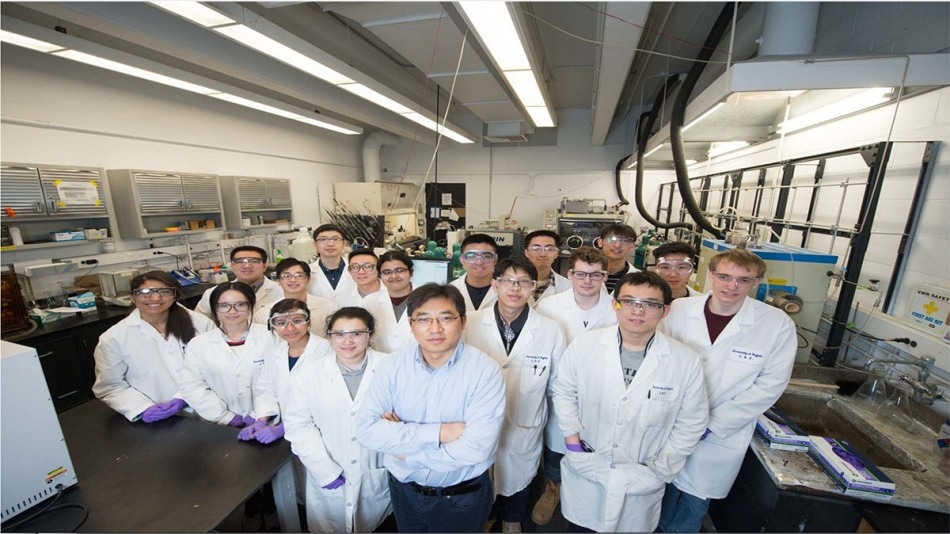Oct 30 2018
In a study reported in the journal Nature Catalysis, a research team headed by the University at Buffalo has reported that manganese, an inexpensive and abundantly available material, could replace platinum as a catalyst in hydrogen fuel cells.
 Gang Wu, front and center with arms crossed, in his lab with his students. (Credit: Onion Studio.)
Gang Wu, front and center with arms crossed, in his lab with his students. (Credit: Onion Studio.)
The development could ultimately help in solving the greatest barrier to hydrogen fuel cells: the use of platinum. Not only is this metal expensive, it is also very rare.
We haven’t been able to advance a large-scale hydrogen economy because of this issue involving catalysts. But manganese is one of the most common elements in Earth’s crust and it’s widely distributed across the planet. It could finally address this problem."
Gang Wu, PhD, Lead Author
Additional authors come from Brookhaven National Laboratory, Oak Ridge National Laboratory, Oregon State University, Argonne National Laboratory, University of South Carolina, University of Pittsburgh Harbin Institute of Technology, and Giner Inc.
For over 10 years, Wu has been looking for substitute catalysts for hydrogen fuel cells.
Although he has reported developments in cobalt- and iron-based catalysts, their usefulness is rather limited because each wears down over time, he says.
In earlier work, Wu found that when nitrogen is added to manganese, it leads to internal changes to the metal that renders it a more stable element.
In similar experiments detailed in the study, Wu developed a comparatively simple two-step technique in which carbon and a form of nitrogen known as tetranitrogen are added to manganese.
This resulted in a catalyst that is as able to split water as platinum and other similar metal-based substitutes.
More significantly, the catalyst’s stability makes it potentially appropriate for hydrogen fuel cells. This may cause the technology to be extensively adopted in cars, buses, and other modes of transportation, and also backup generators and other sources of power.
Wu intends to continue the study, concentrating on enhancing the carbon microstructure of the catalyst and the technique in which nitrogen is added. The aim is to further improve the performance of the catalyst in practical hydrogen fuel cells, he says.
The UB RENEW Institute, the U.S. Department of Energy and the U.S. National Science Foundation supported the study.